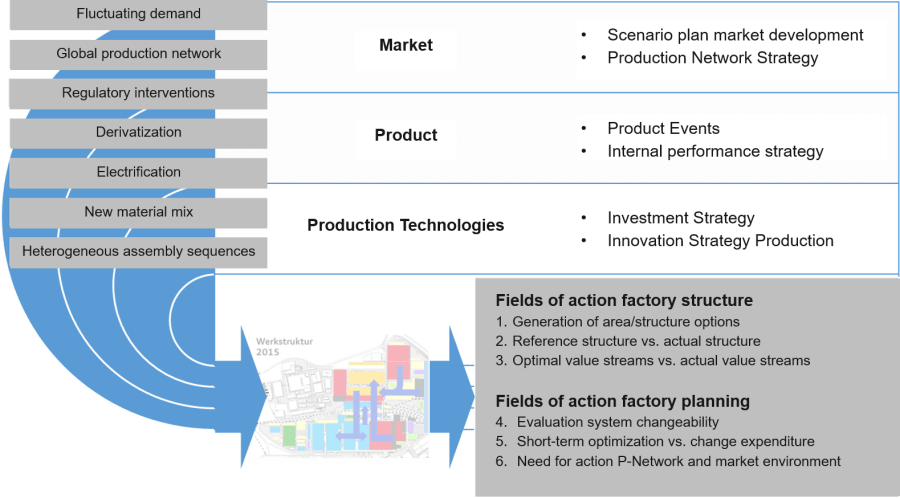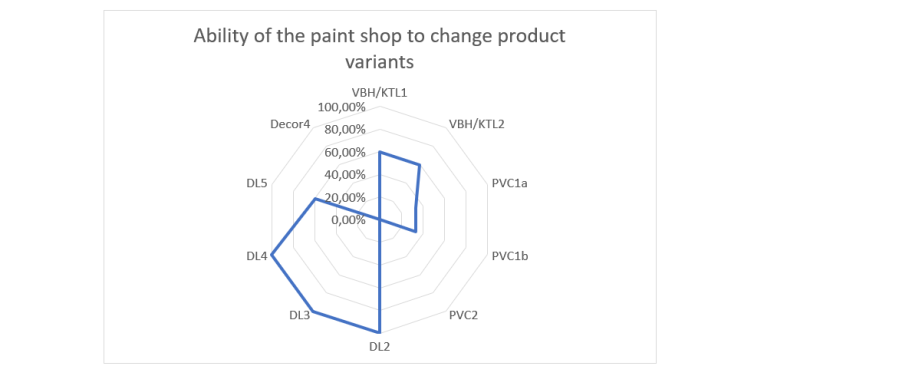Versatility as a success factor for automotive factory structures – simulation parameter study
Automotive manufacturers are constantly faced with numerous challenges. Over the product life cycle of a vehicle, markets and demand change. And with new product features and production technologies, the demands on the factory are also changing. The adaptability of factory structures has been investigated and simulated as part of an industry-oriented research project. And adaptability is more than just flexibility. The latter is the ability to change at the time of planning. Versatility, on the other hand, is the potential to make changes beyond the previously defined limits, if necessary. Adaptability therefore means a reactive shift of the flexibility corridors.
Industry
Automotive OEM
Challenge
How does automobile production change when production areas are duplicated, when their restrictions for different model variants are changed or when buffer or memory sizes have to be changed?

Requirements for automotive factory structures
What investments are necessary to create adaptable production structures?
Solution
In order to be able to quickly evaluate changes on a rough scale and with little effort, a highly aggregated simulation model was created in Plant Simulation. In this model, modifications of the production flow and the properties of production areas between body shop and assembly can be easily simulated and evaluated both qualitatively and quantitatively.
Result
The simulation allowed the investment-related evaluation of different conceptual scenarios (the ability to change structures, capacities and organizations). From this, a company-wide strategy for factory planning could be derived – the basis for the smart factory of the future.



